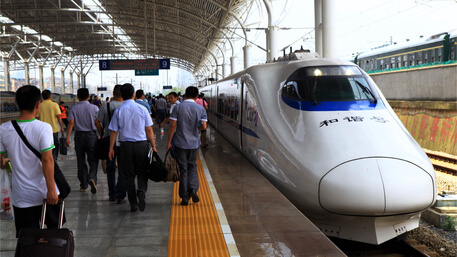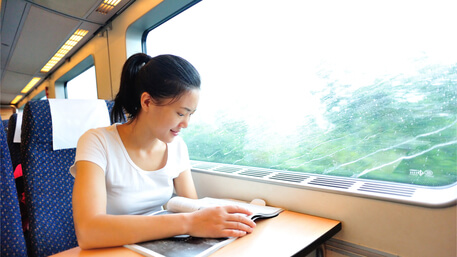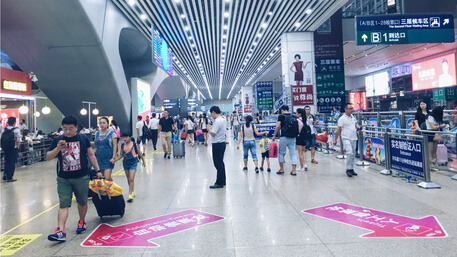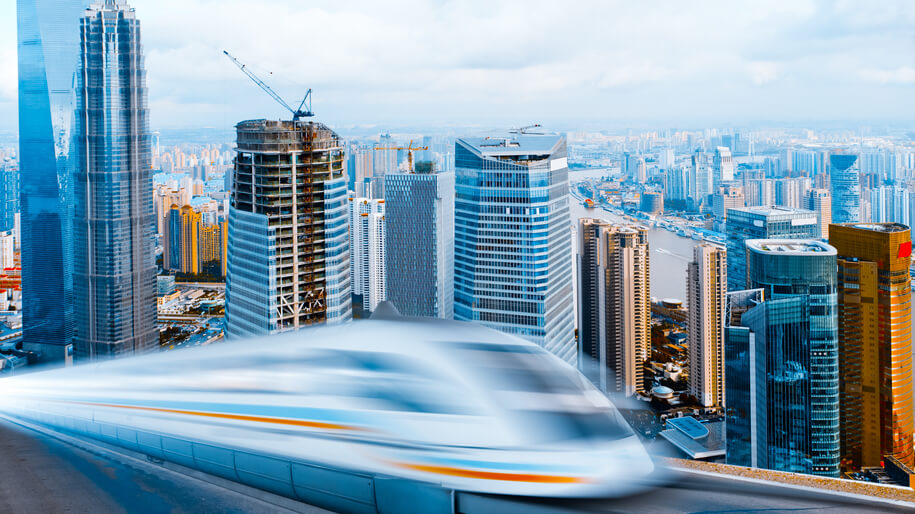10 Apr
2017
Useful Tips For Using Trains In China
Transportation & Travel By China Car Service Comments Off on Useful Tips For Using Trains In China
Traveling in China is usually accompanied by some degree of difficulty. Domestic air travel is often inconvenienced with delays and confusion. China’s roads are well known to be a dangerous option for those who choose to drive themselves (we highly recommend that you don’t!) as well as those who hop inside a local taxi instead of a professional car service in China. Bus routes are often crowded and confusing. One of the best tips for using trains in China is that high-speed trains are often a better option if you’re planning on visiting more than one city, and hopefully visiting cities that are in close proximity, when in China.
Why Take A High-Speed Train In China?

Firstly, China’s high-speed trains are renowned worldwide for being at the forefront of what’s currently possible for public transport. Trains like the Shanghai Maglev, operating from Shanghai’s Pudong International Airport, reach speeds of up to 400 km/h. Most of China’s high-speed trains are non-smoking and surprisingly clean.
Secondly, using a high-speed train can be less of a hassle than hopping on a domestic flight in China. Depending on which cities you’re traveling between, it can also be the quicker option. A flight from Hangzhou to Beijing, for example, takes about 2.5 hours, while the train journey takes about 5 hours. It may seem longer at first, however, when you consider the time spent at the airport to accommodate check-in/baggage drops and boarding (and the very high possibility of flight delays), the train trip will actually take less time. Considering trains are very rarely delayed.
Thirdly, as a business traveler, the train might be a more productive use of your time than hopping on a plane. China’s high-speed train network serves all major business destinations. Depending on which cities you’re traveling between, spending the hours on a train getting some much-needed work done can prove to be a far better use of your time as opposed to spending that time queuing at airports or dealing with flight delays. With the trains set to get high-speed wifi over the next few years, there really won’t be much reason for taking flights when the trains offer a much better use of your time.
Preparing for a trip to China? A private transfer is the safest, quickest way to travel from the airport to the city. China Car Service is a trusted transportation service helping business travelers for almost two decades. We provide door-to-door service at competitive prices.Make your journey stress-free and contact our 24/7 team at Bookings@ChinaCarService.com with questions, or get a quote below. Use this promo code: 10CARBLOG to get a $10 discount on your 1st service. |
How Easy Are High-Speed Trains To Use?

Even for first-time travelers, and unlike the inner city metros, high-speed trains are generally easy to use. Another one of the useful tips for using trains in China is that long-distance train travel only requires you to be at the terminal 30 mins prior to departure. As a foreigner traveling through the country, you’ll need to present your passport at security. With security checkpoints not usually crowded by long queues, finding your boarding terminal shouldn’t take very long at all. Giant lit screens indicate where you should check in, with signs reading both in English and Mandarin.
One of the better tips for using trains in China is that passengers generally only check baggage if they absolutely have to. For example, if they have too many items to manage to get on and off the train by themselves, they’ll choose to check them in. If you’re traveling light, however, with even one larger suitcase and a carry-on, not checking in your baggage can save a lot of time prior to departure. Your ticket may or may not include an assigned seat. It’s common that even if you do have an assigned seat, you’ll find someone else sitting in it when you board. Showing them the ticket with your allocated seat number usually solves the problem and prompts them to move to another seat nearby (albeit, probably still not their actual seat). Many travelers seek tips for using trains in China because of their concern of what sort of food will be available. Luckily, all of the high-speed train stations in China have fast-food outlets, like McDonald’s, available. With a variety of Chinese fast food and snack options available at the stations, filling up before your trip isn’t too difficult. The trains do also have dining cars with juices, teas, and snacks available, plus some arguably expensive hot meals like noodles available to purchase should you feel more hungry.
The biggest difficulty you’re likely to face on a high-speed train is one you’re likely to encounter on any transport route in China, language. Language is a barrier for most foreigners in China. Although English isn’t spoken widely, neither in the trains nor their terminals, the signage and general announcements are done in both Mandarin and English, and are relatively easy to understand.
What Happens At Your Destination Terminal?

Each stop is announced in both Mandarin and English, as well as being displayed on LED signs scattered along each train car. Missing your stop isn’t as easy as you may fear. Once the stop is announced, before the train comes to a halt, it’s usually best to collect your items and get ready to disembark as soon as you arrive at the station. The trains run on a fairly tight schedule and are usually busy throughout their daily hours of operation. Due to the popularity of the trains in China for locals, business travelers, and vacationers alike, the train terminals are vast. Meaning, if you’re planning on using a taxi to your next destination, you’ll likely face a long walk to the taxi stands. Not ideal for anyone traveling with large amounts of luggage.
Upon arriving at your desired terminal, finding transport to your hotel or office in town is fairly simple. It’s highly recommended that you don’t rent a car and drive yourself around China. Not only will you require a Chinese driver’s license, but the roads are notoriously chaotic and dangerous for those who aren’t familiar with them.
Experienced travelers usually prefer to make use of a car service with English speaking drivers that offer a reliable and comfortable ride to their destination. Taxis, although abundant at airports and train stations, are often difficult to catch as a foreigner and can be unsafe. If you’re heading to a business meeting, say, at a factory out of town, a local taxi may not wish to take you out of the city from the train station. In this case, getting from A to B after disembarking the train may be very difficult, if you don’t have pre-arranged transport!
China’s high-speed rail networks are ultimately very impressive and regularly expanding. Depending on which cities you’re visiting, train travel has certainly emerged as a viable alternative to flying domestically in China. Most importantly, before you travel make sure to research your specific route so you know which option is best for you. Safe travels!






